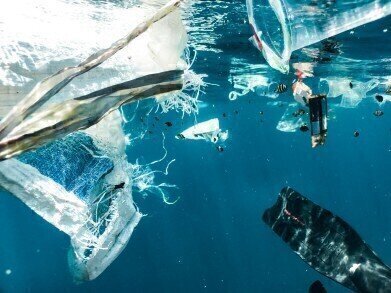Water/Wastewater
Why Are Our Oceans So Polluted?
Feb 03 2016
Water covers 70% of the planet’s surface. Unfortunately, the exponential growth in human population and the industrial explosion that has accompanied it has resulted in much of the ocean becoming polluted. In fact, a recent six-year study concluded that there are currently more than 5.25 trillion pieces of plastic in our oceans – a staggering figure.
Much of this plastic is found in tiny forms, less than 5mm in diameter, which can be consumed by marine life and infiltrate their bloodstreams, causing a myriad health complications and potentially disrupting the food chain. Much of these microplastics are concentrate in particularly polluted region of the Pacific Ocean known as the Great Pacific Garbage Patch.
But how did this plastic get there in the first place? What other pollutants make their way into the sea, and how?
Land to Sea
Unsurprisingly, the vast majority of ocean pollution begins life on land. Although plastics are sometimes improperly disposed of, this is not the primary method of their entering the sea. Instead, non-source pollution is to blame, which comes about as a result of run-off.
Heavy rain and thunderstorms can swell river banks, flood landfills and carry off all manner of pollutants with it. In addition to the plastics named above, floodwater is responsible for picking up the infinitesimal amounts of oil that are dropped by each of the million vehicles on our roadways, which altogether and over time can add up to alarming levels. Carried off with it are countless other kinds of pollutants, including fertilisers and pesticides used in agriculture and residue from septic tanks.
Even dirt can become a pollutant. When excessive amounts of soil find their way into the ocean, they can cloud the water and decrease its purity, thus adversely affecting the various forms of fauna and flora which live there. Dirt and topsoil from heavily ploughed fields or construction sites can cause even bigger problems.
What Can Be Done
Since 80% of all ocean pollution comes directly from the land, it’s obvious that we must all make more concerted efforts to bring these figures down. As well as ensuring we all dispose of our waste responsibly and take all reasonable measures to prevent harmful run-off during times of heavy rain, there are also a number of technological techniques for minimising run-off.
One of these is the construction of artificial wetland areas, which serve to trap contaminants in false aquatic environments before it can reach the real ones. Innovative reed beds have been used to treat wastewater for decades – but now scientists are attempting to broaden their utility to cover run-off protection, as well.
Monitoring ocean quality levels and investing in new and ground-breaking methods of reducing non-source pollution are the key to maintaining the cleanliness of our oceans. Only this way will we avoid disrupting the millions of creatures which call the sea their home and ruin the natural beauty of our planet.
Events
Apr 22 2024 Hannover, Germany
Apr 23 2024 Kuala Lumpur, Malaysia
Apr 24 2024 Sao Paulo, Brasil
May 05 2024 Seville, Spain
May 13 2024 Munich, Germany













